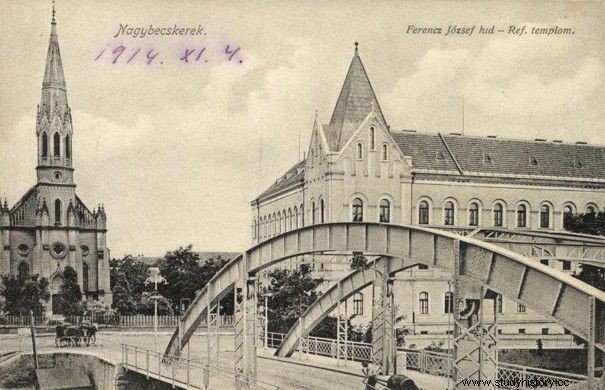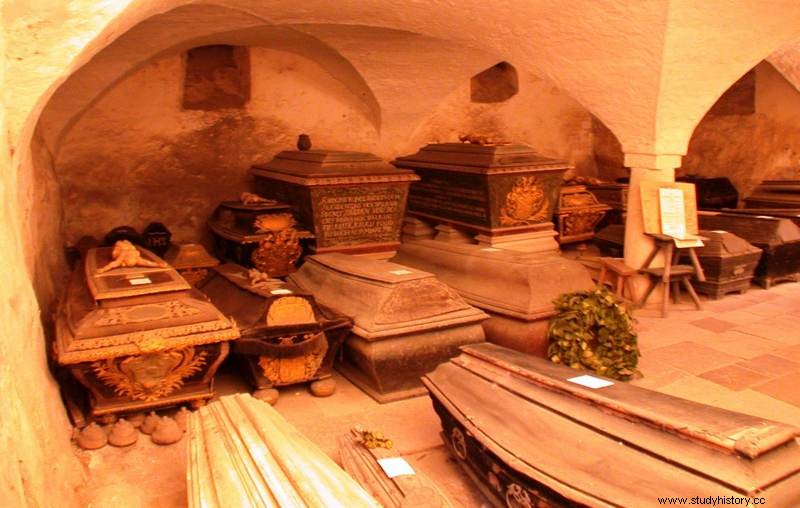This lady wasn't worth messing with. The men who shared their affection with her found this out. It only took an innocent look at another woman to end up in one of the tin coffins in her basement. Until the end of her days, she claimed that she murdered partners out of love ...
Little is known about her life. Photos and documents are lost. Even her family name is unknown. What is left can hardly be put together. So what was Vera Renczi, Romanian "Black Widow" , and what made her love lethal?
A spoiled aristocrat
Born at the end of the 19th century (some sources incorrectly state 1903) and brought up in a family of Romanian-Hungarian aristocrats in Bucharest, she did not experience poverty. Everyone showed their interest to the little noblewoman and fulfilled her every whim.

The town of Berkerekul (now Zrenjanin), where Vera's psychopathic abilities developed. Present view (photo:Alexzr88, public domain).
The situation changed radically when her mother died. The father then decided, together with his 13-year-old daughter, to move to a villa in the small town of Berkerekul, in northern Serbia (now the city of Zrenjanin). There, absorbed in work, he neglected his child.
Vera, used to focusing attention on herself, was unable to come to terms with the new reality. After an unsuccessful attempt to run away from home, her father enrolled her in a girls' school. This was to teach her to conduct herself properly. Didn't teach.
She quickly became a woman at school. First, students from the neighboring gymnasium, then teachers, bankers and businessmen. Her list of lovers was endless. She gave her whole heart to the admirers, and with time they began to get bored with her company. They cheated, rejected or walked away. The young bride had to find a way to keep those she loved. And soon she found it.
An unfaithful husband is a dead husband
She was nearly 20 when her first husband was Karl Schink, a wealthy Austrian banker much older than she was. The idyll lasted until their son Lorenz was born. Then the feeling of a mature gentleman weakened. The situation was not improved by the move of the Schinks to Berkerekul. There Karl quickly became the favorite of the local ladies and then ... disappeared without a trace.

Vera's first husband worked in similar conditions… for a while. Inside a bank in Leipzig (source:public domain).
Vera told friends that her husband had left her. She showed his last letter as evidence. A year later she fell in love again. Serbian businessman Joseph Renczi was the chosen one. To get married, Vera needed a divorce or Karl's death certificate. So she began to mourn and say that her spouse died in the accident.
Local officials not only believed her, but also issued the necessary document. Soon Vera changed her name to Renczi. It was only after the wedding that she found out that her husband was also adored by other women. Joseph was disloyal to his wife and quickly shared the fate of his predecessor.
Again, mourning and stories about my husband's passing away. The broken woman promised herself this time that she would never marry again. However, she did not want to give up the company of men. The need for love and adoration was so strong that it was only a matter of time before new lovers appeared. She even brought some of her admirers from Vienna itself.
Years passed, partners at her side changed. But no one noticed that everyone who moved into her property disappeared without a trace after a short time. Ms. Renczi was getting away with everything as long as she was hanging out with bachelors.

This was the setting for Vera's short romances. Hungarian postcard of Berkerekul in 1914 (source:public domain).
The trouble started when a certain Mr. Milorad, a Serbian banker who had been married for 20 years, caught her eye. When he was also missing, his wife began searching. The trail led to Berkerekul. Concerned, Ms Milorad informed the police of her suspicions. Vera Renczi was a respected widow, so officials did not believe that she was involved in the disappearance of a married banker. They promised to check this lead though.
"I knew you were coming"
In May 1925, Serbian policemen carefully knocked on the door of the stately mansion. Mrs. Renczi opened them and invited them inside. "I knew you were coming" She said calmly, before the officers could ask the first question. Then she pointed to the door leading to the basement.

In the basement of Mrs. Renczi, a similar sight was waiting for the policemen ... (coffins in the crypt of the church in Uppsala, photo:Riggwelter, license CC BY-SA 3.0).
The policemen went down silently to the crypt. As the lamps began to illuminate the gloomy underground, they saw a macabre sight. They saw 35 tin coffins in the room. In each of them there were corpses of varying degrees of decomposition.
The coffins were arranged in such a way that they formed a circle. Between them was an armchair and a table with a glass of red wine. Vera immediately pleaded guilty. She said that she would come here in the evenings and sit next to her men. She talked to them, sipping wine. Each coffin was engraved with the name and age of the victim, and the number of days the unfortunate man spent with her.
Among the coffins was one smaller with the remains of the boy. It turned out to be her 10-year-old son Lorezno, whom she poisoned because he had discovered her secret. She couldn't let the truth about her collection come out.
The "black widow" has been arrested. While in custody, she confessed to all the murders. She explained in detail that she poisoned men with arsenic added to wine or meals. Some she killed right away, with a large dose of poison. Others slowly, applying them small amounts each day. She gave the last victim a lethal dose of strychnine.
Prison talks with the dead
During the investigation, it was discovered that the bones of Vera's husbands were buried in two coffins. Mr. Milorad and the son of Mrs. Renczi were also identified. The rest of the dead admirers were buried in a mass grave, and the place of burial was not made public. A few days later, the American newspaper The Kingston Daily Freeman reported that in the Serbian town of Berkerekul, local police had captured the "new Lucrezia Borgia."
At the hearing, Vera confessed that poisoned her partners for fear of their departure to other women. The men she loved belonged only to her. Murders were the only way to keep them forever.

The text was created, among others based on Richard G. Jones's The Mammoth Book of Women Who Kill.
The "black widow" was sentenced to death by hanging by the court. Due to the introduction in Serbia of a ban on the execution of the death penalty on women, the sentence was changed to life imprisonment.
A woman who loved too much
In prison, Vera began to show symptoms of a mental illness. She saw her victims and spent days talking with them. She loved them and thanked them for not abandoning her. When she was diagnosed with schizophrenia, she was transferred to a psychiatric hospital.
Just before the outbreak of World War II, Ms Renczi suffered a cerebral hemorrhage and died. But are you sure? There are rumors that she lived to see 1960…
The story of Vera Renczi gave rise to a legend about a woman who loved too much to let go of the men of her life. Some researchers have suggested that Vera's murder methods inspired the American writer Joseph Kesselring to create the 1939 comedy "Arsenic and Old Lace".
